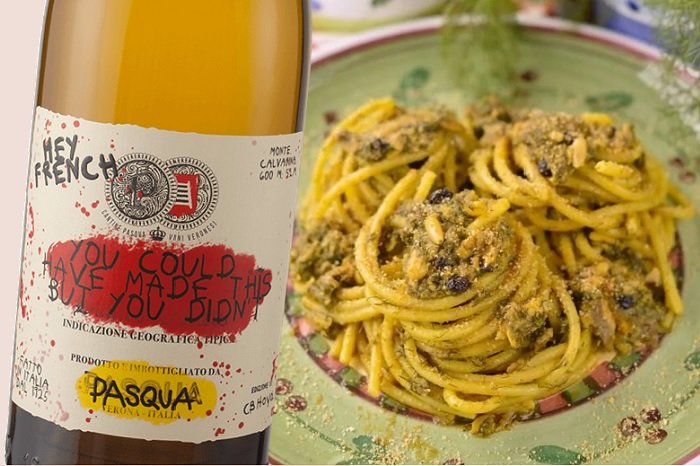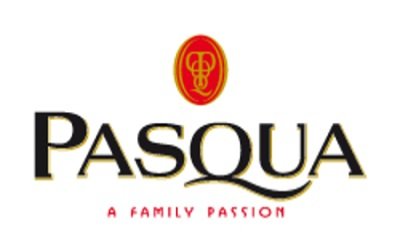This is custom heading element
It is a dish that can be prepared from March to September, during the sardine season.
Ingredients for 4 persons:
300 g wild fennel; 320 g spaghetti; 400 g fresh sardines; 30 g raisins; 30 g pine nuts; 2 anchovy fillets; 1 onion; 1 teaspoon tomato extract; 0;5 g saffron; extra virgin olive oil; salt, pepper and chili
For the breadcrumbs “muddica atturrata”: 150 g breadcrumbs; 40 g evo oil; garlic; oregano; chili pepper
Preparation:
Clean the fennel, wash it and blanch it in salted water for about 10 minutes. Drain it, keeping the cooking water aside for the pasta. Chop it with a knife.
Soak raisins in water.
Clean the sardines well; they should be perfectly de-boned (many fishmongers sell them already cleaned). Cut the resulting fillets into pieces.
In a pan with oil, melt the anchovy fillets and add the tomato extract and chopped onion. Stifling. Dissolve saffron in a ladle of hot water and add it to the sauté. Then add the pine nuts and soaked raisins. Next, add the wild fennel and finally the sardines. Cook everything together for about 10 minutes. If needed, add a little fennel cooking water. At the end, season with salt and pepper and add chili pepper to taste.
Prepare the crispy breadcrumbs (muddica atturrata, in Sicilian): blend the garlic clove, oregano, and chili pepper and add the oil. Move to a bowl, add breadcrumbs and mix well. Pan-fry until toasted and crispy. Crunch well with a fork.
Meanwhile, cook spaghetti al dente in the fennel cooking water (add more water if necessary).
Pour the pasta into the pan with the sauce and stir gently, adding a drizzle of oil.
Before bringing to the table, sprinkle crispy breadcrumbs on the surface.
 Wine pairing:
Wine pairing:
Hey French, You Could Have Made This But You Didn’t, Veneto Bianco Multivintage, Edition III, Pasqua Vigneti e Cantine
Golden straw color and freshness of aromas with floral and saline notes due to the volcanic soil. The different vintages in the blend offer memories ranging from chamomile to almonds, citrus to white pepper and tropical fruits. In the mouth complexity and structure portend good aging potential.
Production area: the Veronese flank of Mount Calvarina, located in the easternmost part of the Soave appellation. This project stems from a four-and-a-half-hectare vineyard that reaches an altitude of 600 meters at its highest part, with southwest exposure, lying on a hill of basaltic-eruptive origin with extensive limestone outcrops. Climatically, the area is favored by its altitude, which ensures cool, breezy summers with wide temperature ranges.
Grape varieties: Garganega predominates with Pinot Blanc and Sauvignon. Cultivation by Guyot (4,500-5,000 vines per hectare) and pergola (3,500 vines per hectare).
Production processes: this wine is the most powerful expression of the characteristics of the blend of the best vintages of the last decade (2019, 2018, 2020, 2017, 2016) selected as the highest expression of the vineyard throughout its history. For each selected vintage, vinification of the white grapes takes place with skin maceration for about 10 hours. Alcoholic fermentation is then engaged at low temperatures with selected yeasts, which is followed by partial malolactic fermentation, about 10 percent of the product. The process continues with maturation in second-passage barriques and tonneaux for about 6 months. Finally, the wine is placed in steel tanks for further aging.
Alcohol content:
13.5% vol.
Serving temperature: 10°C.
Multivintage Notes:
2019 – Has been quite a rainy year. Spring presented significant differences with a hot dry March and a cold rainy bimonthly April and May. The very hot summer also had two significant heat waves in late June and late July. During the heat wave at the end of June, numerous heat records were recorded, with peaks of 38°C. Nevertheless, the abundant spring rains provided the soils with a good supply of water to withstand a hot and rainfall-free June.
2018 – a year with important implications in the Soave area: slightly above-average temperatures and tropical weather phenomena, with heavy and heavy rains alternating with warm and sunny, though windy, days. Despite the special and complex climatic conditions, it proved particularly favorable and expressive especially for vineyards at higher altitudes, where the effects of hot days were less intense.
2020 – started with a mild winter with little precipitation and then changed in the spring, especially in April and May. The summer months were optimal with no extreme temperatures and perfect water supply.
2017 – one of the most complex in the past 30 years. The low rainfall (even in winter) and high temperatures during the summer greatly influenced the season, giving the wine a strong personality and precise style.
2016 – characterized by heavy rains and non-exuberant production, with grapes reaching the average of recent years in terms of sugar and acidity, but with excellent quality characteristics. The analytical framework of the grapes during vinification resulted in a fruity and floral wine.





